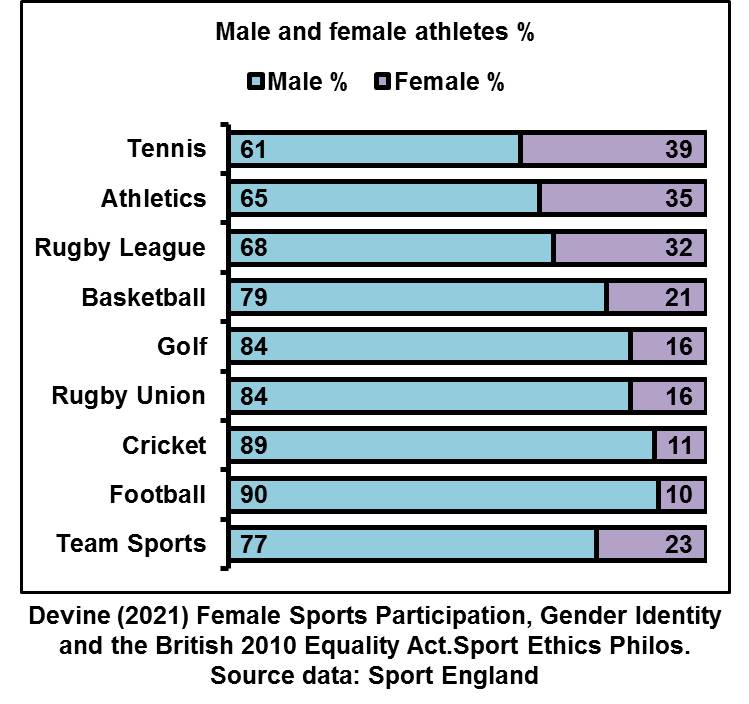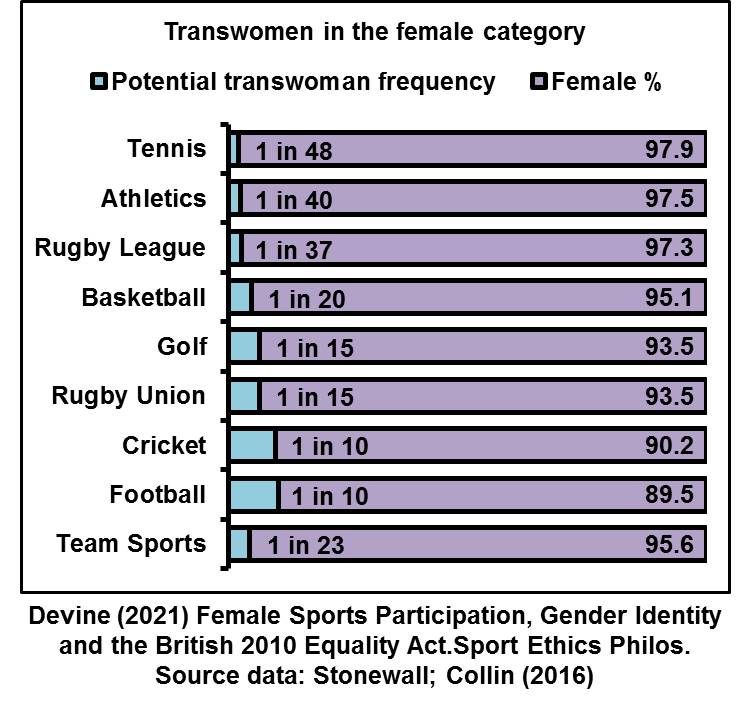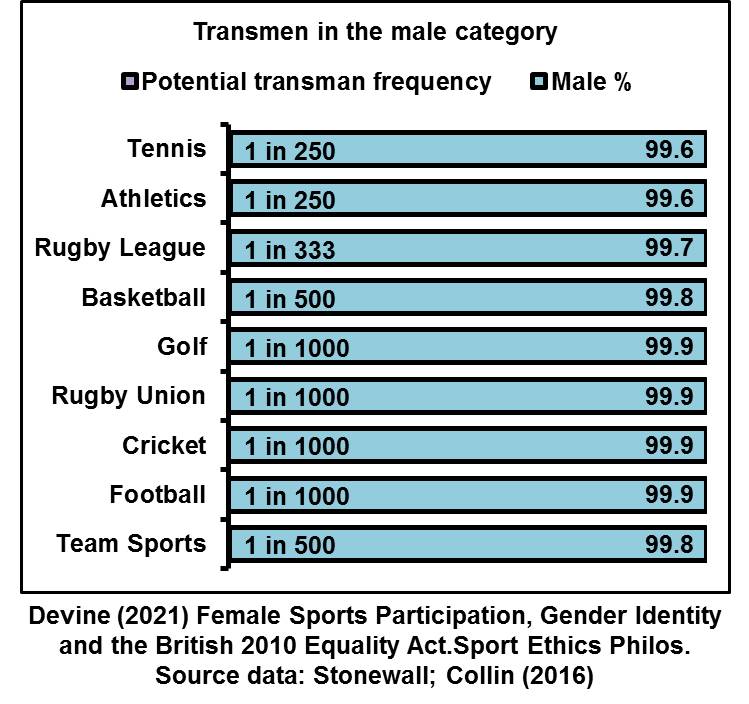
With Cathy's permission, I have converted the stats from this paper into graphic form.
Read on.
Read on.
https://twitter.com/cathydevine56/status/1457991736039559169
First, Cathy reported the numbers and % split of UK males and females playing selected sports. Male participation is higher than female participation. 

Then, Cathy used population estimates to predict the numbers of male and female athletes who would be eligible, under a selfID model, for the opposite sex category. Cathy calculated these trans athletes as % of opposite sex category.
I have calculated the trans athletes as a frequency in the opposite sex category.
Here is the data for transwomen in female sports.
Here is the data for transwomen in female sports.

Having calculated the disproportionate number of males compared with females in selected sports and the disproportionate number of transwomen compared with transmen, Cathy argues that selfID would disproportionately affect female sports.
I have mapped the asymmetric effect on male and female sports here.
SelfID would have 5 x greater effect on female tennis than on male tennis. It would have 100 X greater effect on female football than on male football.
@DavidTriesman
SelfID would have 5 x greater effect on female tennis than on male tennis. It would have 100 X greater effect on female football than on male football.
@DavidTriesman

Cathy argues that, because of this large effect on female sport compared with a small effect on male sport:
"Eligibility criteria based on gender identity, rather than biological sex in these sports do not therefore appear justified, balanced, or even possibly legal in Britain."
"Eligibility criteria based on gender identity, rather than biological sex in these sports do not therefore appear justified, balanced, or even possibly legal in Britain."
So I'm going to go a bit off-piste now.
Cathy calculated the numerical impact on athlete numbers based on population data. There was, because it's tricky to work out, no adjustment for relative advantage/disadvantage in the opposite sex category.
Cathy calculated the numerical impact on athlete numbers based on population data. There was, because it's tricky to work out, no adjustment for relative advantage/disadvantage in the opposite sex category.
That is, transwomen, simply by dint of numbers, may reach a frequency of 1 in 40 athletes in the female category, across that entire female cohort.
I think the effect at the elite female level will higher.
I think the effect at the elite female level will higher.
We have good performance data for athletics, so let's use that example.
Cathy reports, in athletics, 137400 male and 73500 female athletes. If 1.34% of males selfID into the female category, that's 1841 males from the male cohort>female cohort.
Cathy reports, in athletics, 137400 male and 73500 female athletes. If 1.34% of males selfID into the female category, that's 1841 males from the male cohort>female cohort.
If we represent the male and female cohorts as blocks of 5000 athletes, and assume no performance difference between males and females, we expect around 130 males to selfID into the top 5000 female cohort. This delivers the 1 in 40 frequency calculated earlier. 

However, we know that elite males have a 10% advantage in running. Stretching the male range to account for this means the top 5000 female cohort might contain 260 males. This frequency is now 1 in 20. 

A big assumption here is that transitioning males are equally likely across all levels of sport. I'm also open to other methods of adjusting population numbers for performance advantage. This was a quick analysis on my part.
• • •
Missing some Tweet in this thread? You can try to
force a refresh








